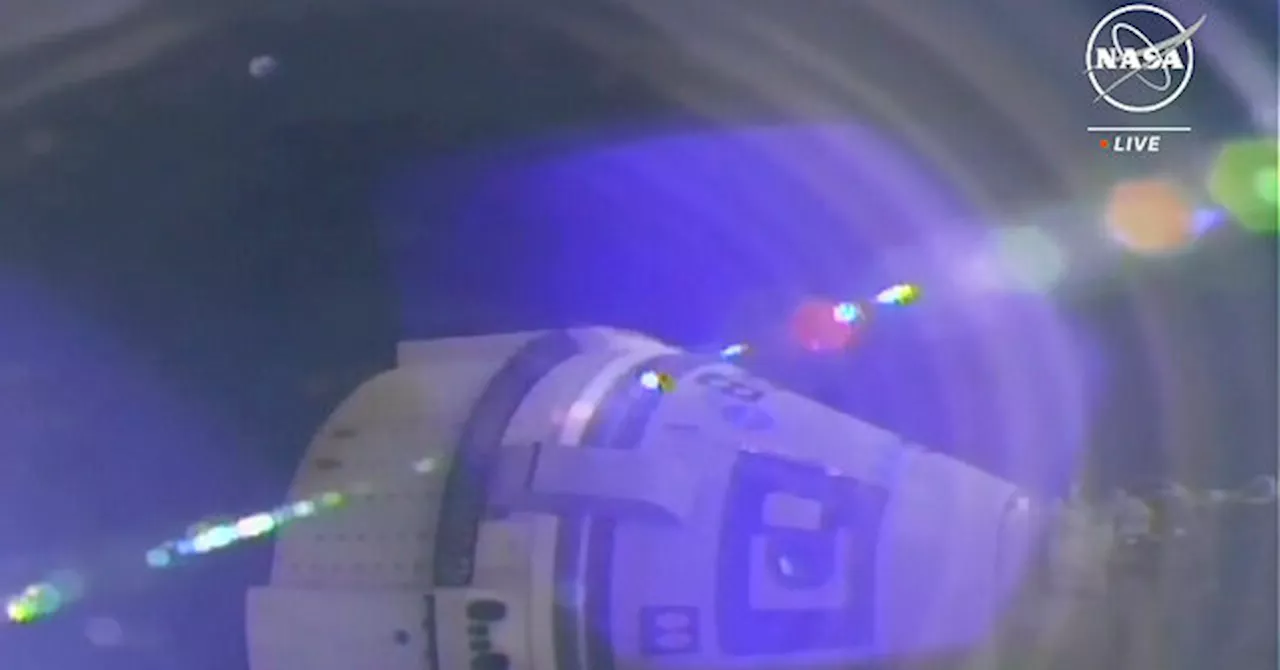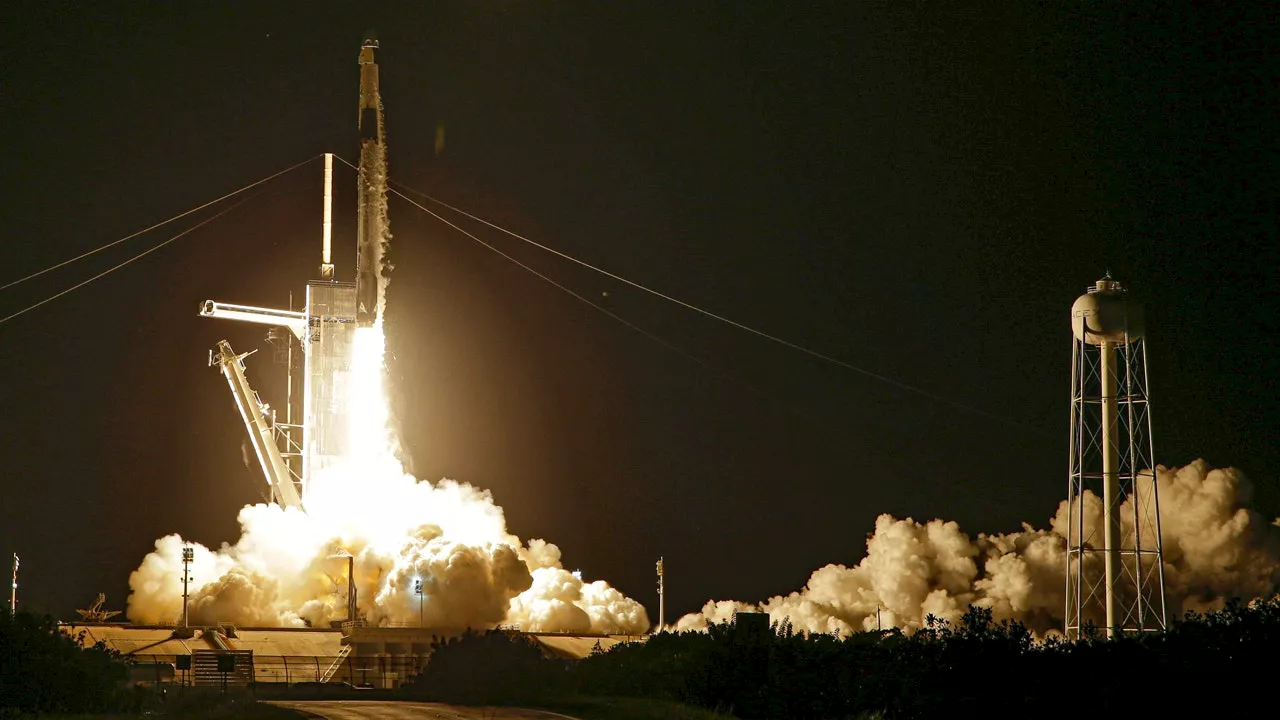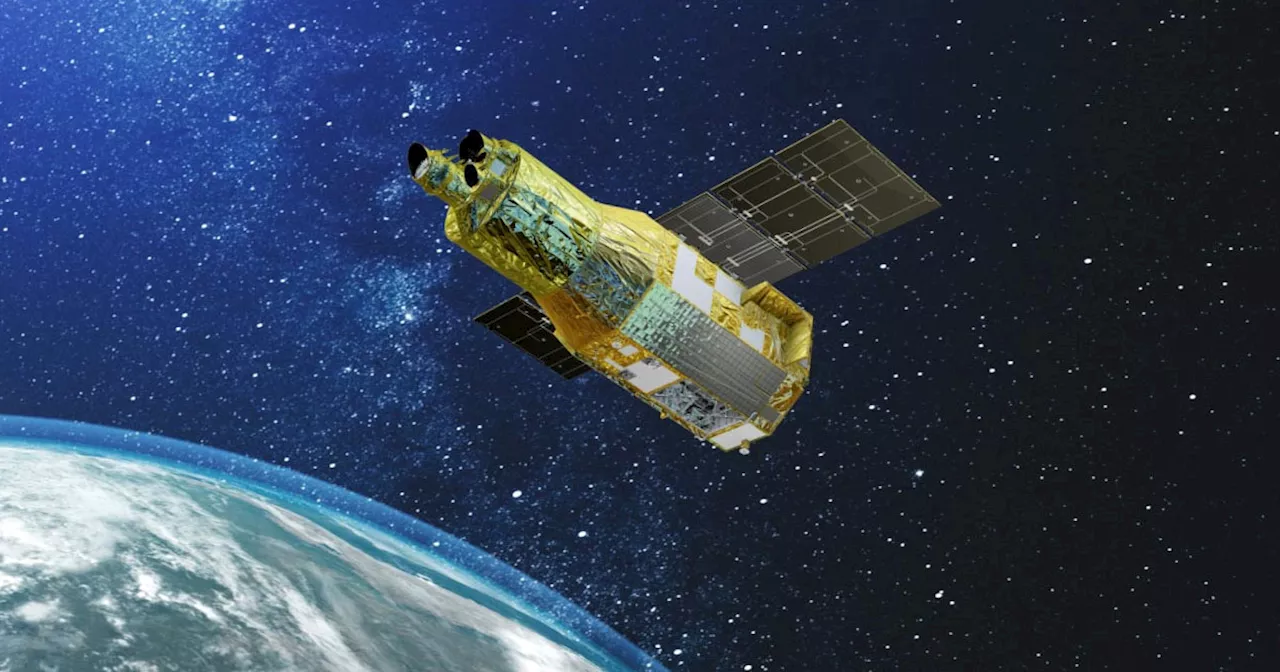Science, Space and Technology News 2024
The Copernicus Sentinel-2 mission reveals the Meteor Crater in Arizona, a significant geological feature created by a meteorite impact 50,000 years ago. The crater, with its unique squared-off shape and extensive debris field, offers insights into the violent forces that shape planetary surfaces. Credit: Contains modified Copernicus Sentinel data , processed by ESA
The Meteor Crater in Arizona, formed by a meteorite impact 50,000 years ago, provides valuable insights into the geological processes of planetary bodies. Preserved by its desert climate, the crater is a key site for studying impact craters.Around 50,000 years ago, an iron-nickel meteorite, estimated to be 30-50 m wide, smashed into North America and left a massive hole in what is today known as Arizona.
During its formation, millions of tonnes of limestone and sandstone were blasted out of the crater, covering the ground for over a kilometer in every direction with a blanket of debris. Large blocks of limestone, the size of small houses, were thrown onto the rim.One of the crater’s main features is its squared-off shape, which is believed to be caused by flaws in the rock which caused it to peel back in four directions upon impact.
The wide perspective of this image shows the crater in context with the surrounding area. The impact occurred during the last ice age, when the plain around it was covered with a forest where mammoths and giant sloths grazed.Over time, the climate changed and dried. The desert that we see today has helped preserve the crater by limiting its erosion, which makes it an excellent place to learn about the process of impact cratering.Impact craters are inevitably part of being a rocky planet.
As part of the global effort to hunt out risky celestial objects such as asteroids and comets, ESA is developing an automated telescope for nightly sky surveys. This telescope is the first in a future network that would completely scan the sky and automatically identify possible new near-Earth objects, or NEOs, for follow-up and later checking by human researchers.
United Kingdom Latest News, United Kingdom Headlines
Similar News:You can also read news stories similar to this one that we have collected from other news sources.
 James Webb Space Telescope spots asteroid collision in neighboring star systemRobert Lea is a science journalist in the U.K. whose articles have been published in Physics World, New Scientist, Astronomy Magazine, All About Space, Newsweek and ZME Science. He also writes about science communication for Elsevier and the European Journal of Physics. Rob holds a bachelor of science degree in physics and astronomy from the U.K.
James Webb Space Telescope spots asteroid collision in neighboring star systemRobert Lea is a science journalist in the U.K. whose articles have been published in Physics World, New Scientist, Astronomy Magazine, All About Space, Newsweek and ZME Science. He also writes about science communication for Elsevier and the European Journal of Physics. Rob holds a bachelor of science degree in physics and astronomy from the U.K.
Read more »
 Elon Musk wins ‘space tug’ contract to deorbit International Space StationThe plans to build a deorbit vehicle were announced in March 2023, however, its exact design and technical details remain under wraps.
Elon Musk wins ‘space tug’ contract to deorbit International Space StationThe plans to build a deorbit vehicle were announced in March 2023, however, its exact design and technical details remain under wraps.
Read more »
 Will Space Tourists Be Getting Heart Attacks in Space?Space and astronomy news
Will Space Tourists Be Getting Heart Attacks in Space?Space and astronomy news
Read more »
 Astronauts Stranded in Space at International Space Station as Boeing Starliner Faces Multiple IssuesSource of breaking news and analysis, insightful commentary and original reporting, curated and written specifically for the new generation of independent and conservative thinkers.
Astronauts Stranded in Space at International Space Station as Boeing Starliner Faces Multiple IssuesSource of breaking news and analysis, insightful commentary and original reporting, curated and written specifically for the new generation of independent and conservative thinkers.
Read more »
 New research investigates how short-term space travel affects 'space tourists'New studies show that space tourists experience some of the same body changes as astronauts who spend months in orbit. These changes mostly revert to normal after people return home.
New research investigates how short-term space travel affects 'space tourists'New studies show that space tourists experience some of the same body changes as astronauts who spend months in orbit. These changes mostly revert to normal after people return home.
Read more »
 Scientists 'Absolutely Gutted' as Door Jammed on Expensive Space Telescope, Blocking Its View of SpaceScience and Technology News and Videos
Scientists 'Absolutely Gutted' as Door Jammed on Expensive Space Telescope, Blocking Its View of SpaceScience and Technology News and Videos
Read more »
